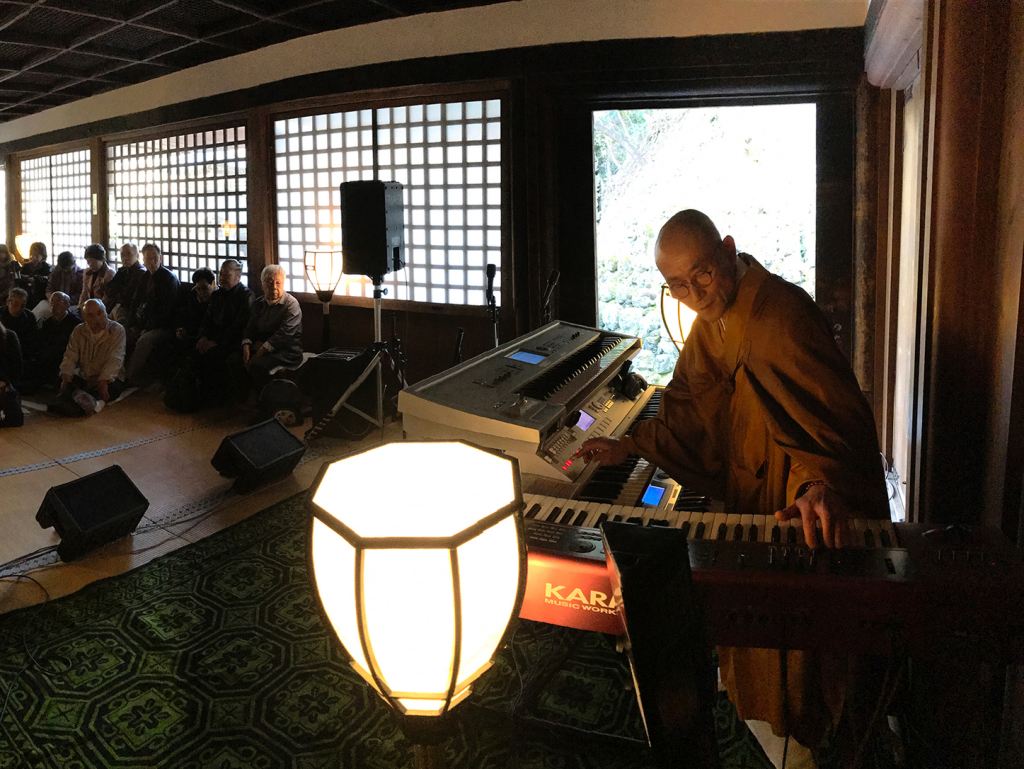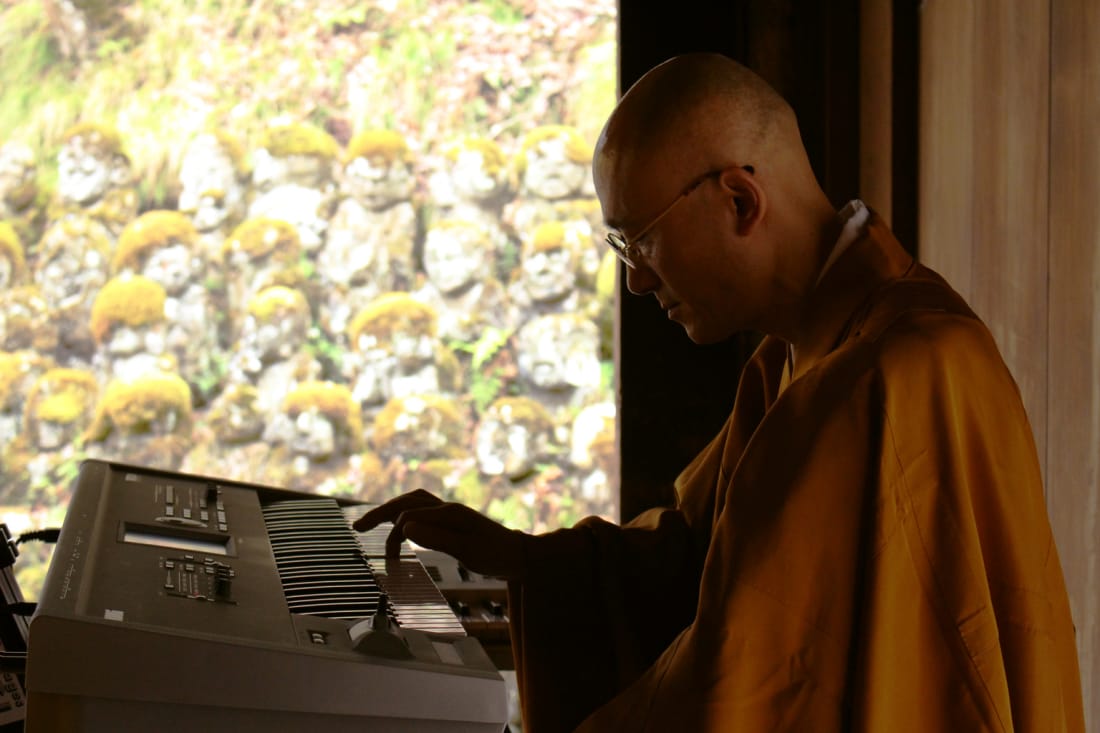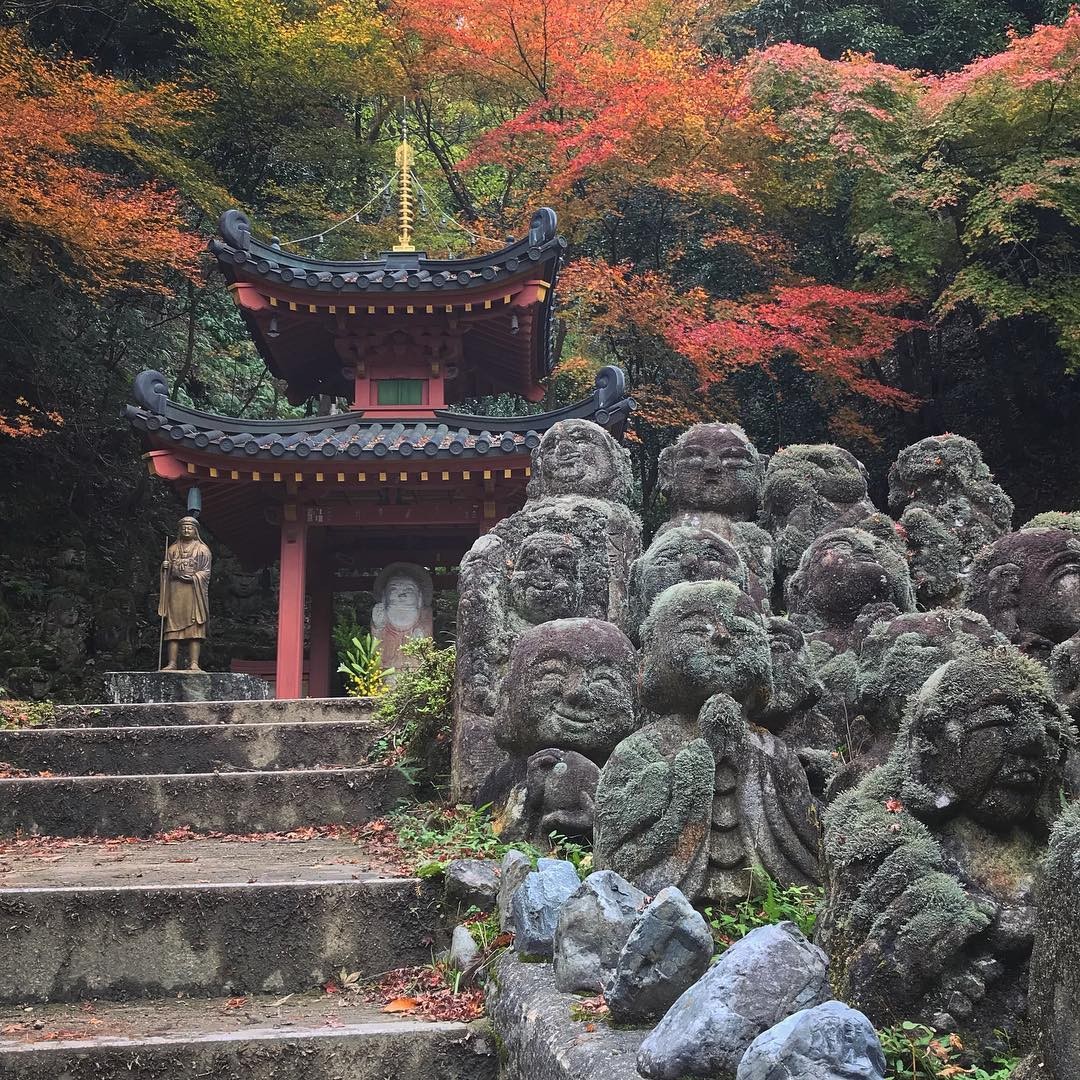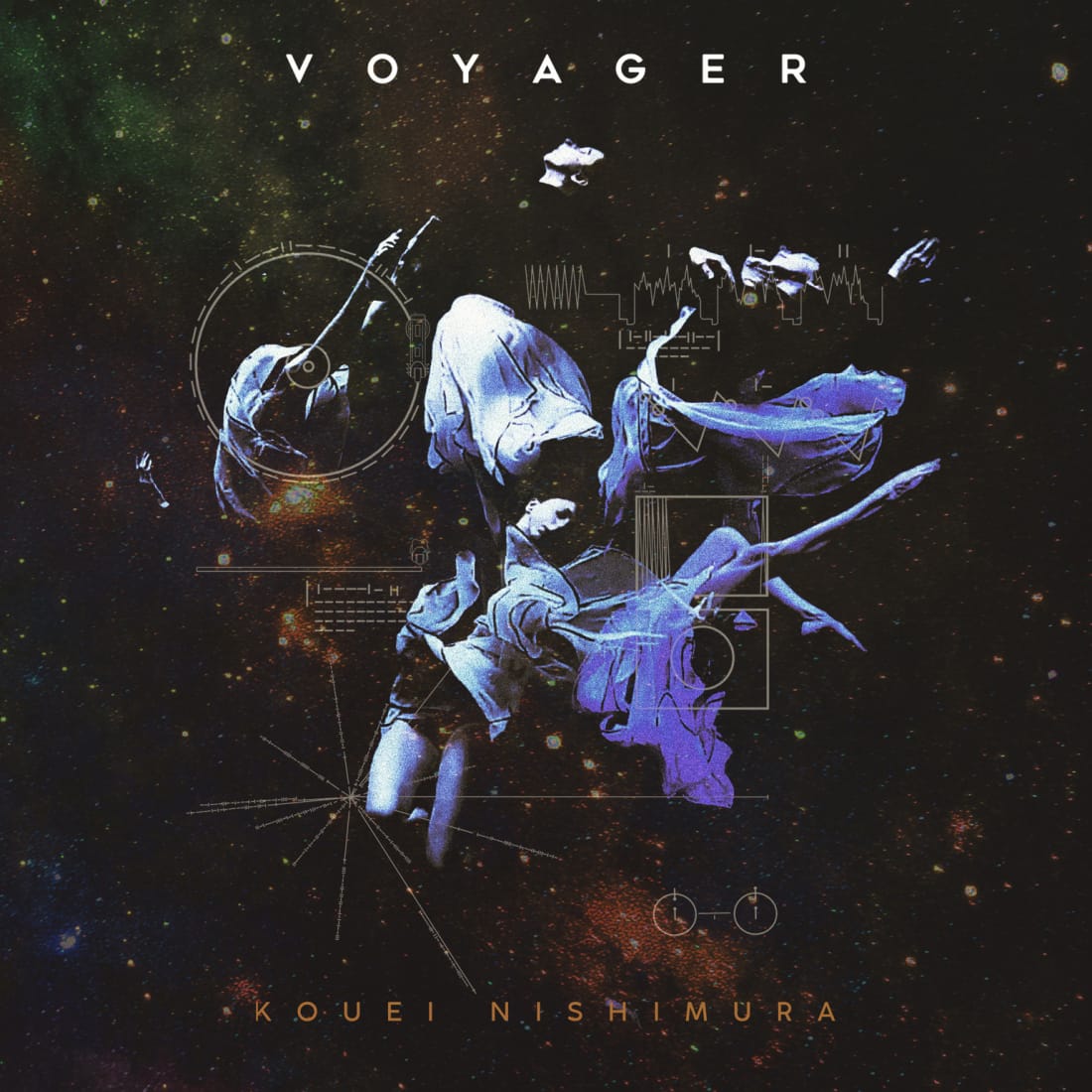It’s early afternoon on one of those enjoyable early April days that feels more like mid-May, and something remarkable is happening in a remote corner of Kyoto.
Otagi Nenbutsuji temple, located on the northern outskirts of Arashiyama, is known mainly for its collection of 1,200 stone statues of rakan – the followers of Buddha. The mossy figures conjure up an undeniably Ghibli-like atmosphere that borders on magical, but the statues aren’t the main attraction on this special day. Today is the Buddha’s birthday, and a small group of locals has gathered to witness an inspiring collision of music and faith.
The Priest’s Performance
In the calming darkness of the temple’s 14th-century wooden hall, the audience settles onto worn tatami mats. After an initial recitation of Buddhist prayers, a diminutive priest in an orange robe pivots from the traditional altar of candles and incense to a modern one of black and white keys.
Choruses of violins, angelic choirs and loops of spacey magic flow from Korg keyboards. The music carries the imagery of mandalas, the complex art pieces that provide symbolic mappings of Buddhist cosmology. The priest closes his eyes and plays from memory, from his heart directly into ours. Bereft of repeating melody, the meandering composition is nonetheless structured to take us on a journey into the complexities of ourselves. How to interpret the intricate message is up to listeners, with the music serving as a mirror that we can gaze into if we so choose.
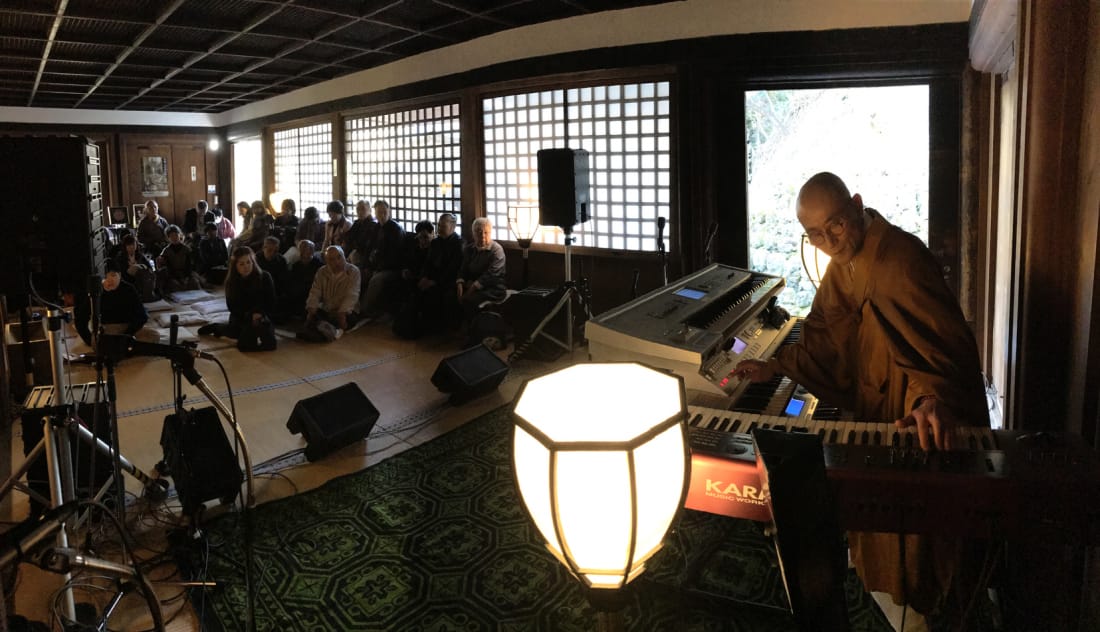
The man behind the keyboard is Kouei Nishimura, the head priest of Otagi Nenbutsuji. His father, former head priest and renowned sculptor Kocho Nishimura, led the project to carve the 1,200 rakan that put this temple on the map in the 1980s. Kouei continued his family’s dedication to finding ways to express Buddhism through art, choosing to explore music as the channel between Buddha and his listeners.
Truly One of a Kind
This is a rare chance to enjoy an electronic concert in a traditional Buddhist setting. According to Nishimura, nowhere else in Japan is this sort of event held. Today’s concert consists of tracks from his 2019 album Rainbow Rose. Through the music, the essence of the spiritual message stored in the mandalas is transferred to the listener. This is not the usual way of transmitting Buddhist teachings, but after a staggering collection of 42 albums spanning decades, the self-taught musician has perfected a special way of inviting listeners to look inside and find themselves simply through music. It’s a remarkably effective way of pushing the envelope in a conservative school of Buddhism that generally discourages new methods and rituals.
“It’s all around us, like air that we don’t notice until we realize that we are breathing it”
“Temples used to be about art,” Nishimura says. “That was their medium for transmitting a message.” His message is one of peace and understanding delivered through fascinating electronic music using a blend of new age synth sounds and classical harmonies to create vivid soundscapes. For him, the music is a parallel to his father’s religious sculptures, with his compositions often based on Buddhist imagery. Just like how his father brought stirring images from wood, Kouei’s music calls forth a primordial force that was lying in wait for the artist to channel it. “The music is a message,” he explains. “It’s all around us, like air that we don’t notice until we realize that we are breathing it.”
‘Become the Voyager’
The profound sounds that Nishimura creates are designed as meditation accompaniment or simply for a quiet moment at home. His new album Voyager explores what it means to travel into the unknown. Structured as a journey through our solar system, it follows Nishimura’s idea that we can perhaps reach other dimensions if we are able to focus ourselves to the task. He urges listeners to “become the voyager” by putting on the album and meditating. “Fly into space, into other levels of existence. Don’t worry about coming back right away.” With the current state of the world, a journey into inner peace could be exactly what we need.
As he reflects on his body of work, Nishimura casually wonders if the complex meanings in his music are being understood by his listeners. Judging from the smiles on the faces of his audience and the steady growth of his fanbase, it seems that his message is getting through loud and clear.
Otagi Nenbutsuji remains open for visitors during the new coronavirus pandemic. A selection of Kouei Nishimura’s work, including his latest album in its entirety, is available to enjoy on his YouTube channel.
Updated On April 26, 2021

